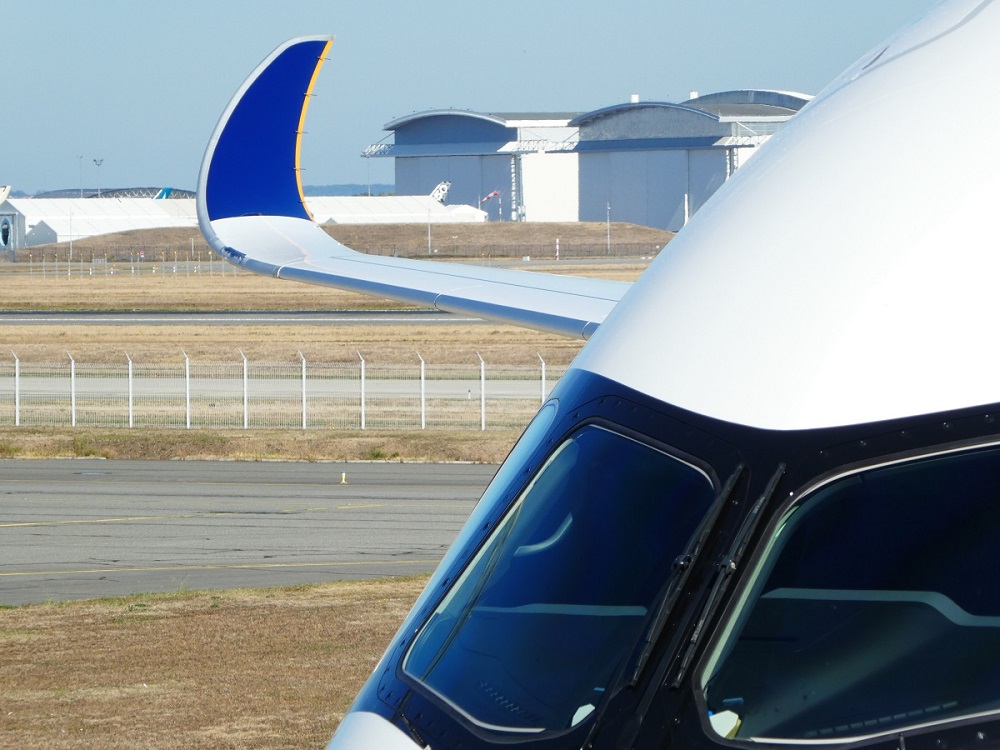European giant Airbus doesn’t expect a predicted downturn in orders to stop it from delivering more than 700 aircraft next year after posting a record 688 deliveries in 2016.
Executives expect deliveries to rise despite a downturn in demand from airlines that is tipped to result in fewer orders than the 731 it received last year after cancellations.
The European company beat rival Boeing in terms of net orders in 2016 — the US manufacturer reported 668 — but fell short of the 748 deliveries logged by its competitor.
The Airbus deliveries were up 8 per cent on 2015 and included 545 single- aisle A320 family aircraft, 68 of them A320neos and 40 per cent of them the bigger A321s. There were also 66 A330s, 49 A350 XWBs and 28 A380s.
“We delivered on our objectives in a challenging environment, proving our ramp-up readiness for the future,’’ Airbus Commercial Aircraft president Fabrice Bregier said.
The A350 target was met despite a problem with cabin equipment suppliers early in the year and represented a 350 per cent ramp-up in deliveries on 2015.
The A320neo also suffered engine issues but the manufacturer and the engine companies managed to mitigate the impact of the problems and catch up on deliveries.
A big push in December saw Airbus deliver a whopping 111 aircraft for the month, about twice the normal level, and Bregier joked this level of output would not continue in the New year.
“We will see for December ’17 but I hope we’ll not have to strike another record and that we’ll be a but smoother during the year,’’ he said. “But 2016, especially the first six months, was unusually difficult from the production perspective.’’
There were 218 cancellations but this included a long-standing order for 82 aircraft with the now defunct Indian airline Kingfisher as well as 72 conversions from conventional aircraft to more fuel-efficient neo models.
About 20 per cent of Airbus deliveries by value went to lessors with 16 per cent heading to North America, 19 per cent to Europe, 31 per cent to Asia and 14 per cent to the Middle East.
Airbus’s overall backlog of 6,874 aircraft is valued at more than $US 1,018 billion at list prices, which is higher than the prices airlines pay. More than 5000 of these are neo models.
The backlog is a major reason Airbus needs to keep boosting production because it is essentially sold out in areas such as single-aisle aircraft until 2021.
The company’s head salesman, John Leahy, conceded that there was an “order cycle’’ which saw airline demand dip and rise but said this was no longer linked to deliveries. He pointed to fact that Airbus had increased production for 14 consecutive years.
Leahy affirmed earlier comments by Bregier that Airbus would increase production to at least 700 in 2017 and said it would release more precise numbers next month
“Now does that mean that orders are going up next year?’’ he said. “Most likely not. If you go back and look at that cycle, I would say that orders are going down next year.’’
Airbus celebrated its 10,000th delivery last year, started deliveries of both engine variants of the A320neo and certified the Pratt and Whitney-powered A321neo.
It expects to certify the CFM-powered A321 variant at the end of the first quarter.
“This is on track and the family will soon be complete with the 320, the 321 and 319 will come a bit later,’’ Bregier said.
The Airbus executive said the company was also well placed to move progressively to a production rate of 60 single-aisle aircraft a month from mid-2019.
“We have a backlog, our issue to is to make sure that we can deliver, but we are about at rate 50 right now and so I believe that we can be extremely confident that we will do it.’’
Despite initial difficulties, the company delivered A350s to 11 customers and met its production target. It also delivered two, bigger A350-1000s to its flight test program. The aircraft still has a backlog of more than 800 net orders after the deliveries.
The A350-1000 performed its first flight test on November 24 and Bregier said the company had opened the flight envelope, with both aircraft now flying and the plane performing as expected.
He believed that the company had largely de-risked the program and the ramp up to the delivery of 10 aircraft per month by the end of 2018 would be “a linear progression”.
The type had also achieved a steady 98.6 per cent operational reliability in the last four months of the year “which is very good after less than two years in operation’’, he said.
‘it confirms that the maturity in service of this aircraft is good, that the design is robust and, of course, we expect to improve it again and to be at 99 per cent in about one year’s time,’’ he said.
The A330neo is now in final assembly and the company last year delivered its first regional version of the conventional aircraft.
“We have started the assembly at the final assembly line of the A330 on time and we will have a first flight, as we expect, during the first half of 2017,’’ Bregier said.
Airbus reaffirmed its support for the struggling A380 superjumbo and reiterated its stance that it believed traffic growth would ultimately stimulate demand.
Despite what he termed “a slow commercial performance’’, Bregier said the aircraft had a future with the company as congestion hit more airports in coming years.
Airbus is slowing production of the A380 to one aircraft per month and has renegotiated its delivery schedule with Emirates to move back by a year deliveries of 12 planes originally scheduled to arrive in 2017 and 2018.
























